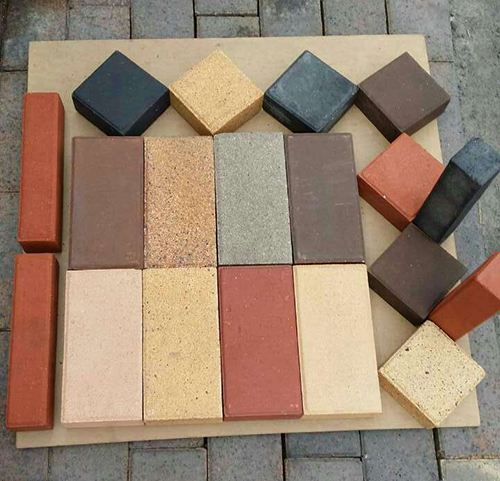Causes and preventive treatment of efflorescence in clay brick tiles
The clay brick tiles that have emerged in recent years are loved by most builders for their strong texture and elegant appearance. However, buildings that use clay brick tiles as exterior wall tiles are more prone to the phenomenon of white efflorescence on the brick surface than buildings that use ordinary glazed tiles, which is collectively referred to as “efflorescence”, which directly affects the appearance of the building’s facade.
clay brick tiles are generally made of various pottery clays and other ceramic raw materials, which are vacuum-extruded to form a hollow body that connects two bricks into a whole, and is fired after drying. Because it is double-layered when it is formed, it can be separated into two pieces after being fired or at the joint of the front ribs, and it can be separated into two pieces, so it is called clay brick tiles, also known as clay brick tiles and double brick. The clay brick tiles has a soft color and a stable appearance. The surface can be smooth or rough. It can provide strong concave and convex lines. It can also be assembled into different patterns of art decoration effects. It has an obvious three-dimensional effect. It is a new type of exterior wall decoration material. It is widely used in buildings, squares, passages, parking lots, subways and other places. Compared with the current colored glazed bricks, glazed bricks and unglazed bricks used for architectural decoration, the clay brick tiles have a dovetail groove on the back of the bricks, and the sticking is firm and will not fall off. At the same time, the products are completely fired from natural raw materials, with high strength and acid resistance. Alkali, non-slip, anti-corrosion, and air permeability. Poorly paving the clay brick tiles will easily cause the whitening of the brick surface, which is collectively referred to as “efflorescence.” Once this phenomenon occurs, you must first understand the true reasons for splitting the bricks and paving the efflorescence. Targeted treatment and prevention.
- Reasons and principles of efflorescence due to poor clay brick tiles paving: construction material reasons: wall base plastering layer contains higher free alkali content; binders and jointing agents contain higher free alkali content; construction technology Reason: When paving, the adhesive filling rate on the back of the clay brick tilesis insufficient, forming a cavity; the joints are not full, causing cracks, and causing rainwater to seep. The principle of efflorescence: due to the above-mentioned reasons of insufficient base layer, bonding material, jointing material and paving joints, after rainwater enters the back of the brick or the gap, it will produce free alkali in the bonding material and jointing material. The physicochemical reaction produces white flowers, which permeate through the cracks or brick surfaces of the bricks to form efflorescence.
- The methods to effectively prevent efflorescence after splitting the tiles are as follows: dry the base layer and spray the impermeable material first; choose low-alkalinity adhesives and jointing agents; during the construction process, the adhesive paving is full , Jointing is dense; after paving, the jointing should be completed after the adhesive is fully cured, generally not less than 48 hours, which is more than 7 days; avoid construction in rainy days, especially avoid jointing in rainy days.
- The treatment method of clay brick tiles that have produced efflorescence is: on sunny days, clean the brick surface with oxalic acid and rinse with water; after the brick surface of the clay brick tilesis air-dried, spray a layer of colorless and transparent anti-seepage agent to protect the outside world. The water cannot enter the back of the clay brick tiles or grooves to prevent the production of efflorescence: water. (Because the air humidity is high in rainy days, it is not suitable to operate in rainy days); after spraying the anti-seepage agent, the brick surface effect of the clay brick tiles will not be affected.
